Updated: 21st May 2024
Garlic scapes grow on Hardneck Garlic, and occasionally on Softneck Garlic (usually only if stressed). If you aren’t sure what type of garlic you are growing, if it starts producing a scape, it’s most likely a hardneck cultivar. Scapes develop around late May and early June in the UK.
You need to remove the scape as otherwise the garlic plant will put all it’s effort into creating flowers that turn into ‘bulbils’ (miniscule bulbs) in the scape, as the expense of the size of bulb in the ground.
1. A garlic scape just developing.
2. The scape has further developed and is leaning over.
3. The scape has now turned into a hook.
You want to snap off the garlic scape as soon as you notice it. This is because the plant will put all it’s energy into developing the scape, at the expense of the bulbs in the ground. The scapes turn into flowers that produce ‘bulbils’, tiny bulbs, which are interesting per se, but not if you want to actually harvest some garlic bulbs!
4. Snap the scape off at this point.
5. The scape section left of the plant may still grow a little more, but will then stop, viz:
6. Don’t waste the garlic scapes, as they can be eaten!
A lot of people make Garlic Scape Pesto (think normal pesto but with garlic scapes included). However, I tend to either just chop it up and add it into whatever I’m cooking at the time, such as omelettes, soup or a curry. Or if I have a lot, freeze them to use at a later time. You can add it into any dish you where you would add garlic. The Garlic Farm have a good list of suggestions if you want further inspiration. The scapes have a milder flavour compared to the bulbs.
So, if you notice these developing on your garlic, now you know what to do with them.
* * * * *
If you would like to know more about growing garlic, do check out my Spoonie Veg: Garlic post. And of course how to preserve them by freezing them post.
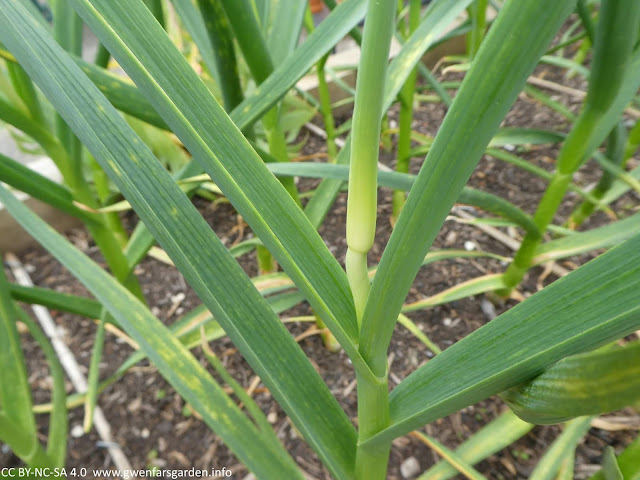

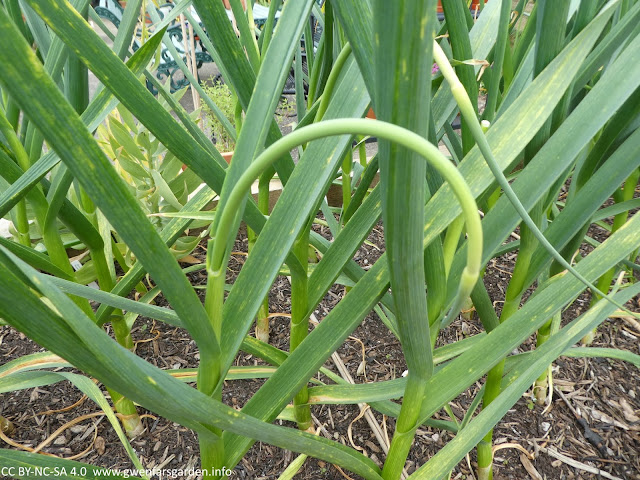
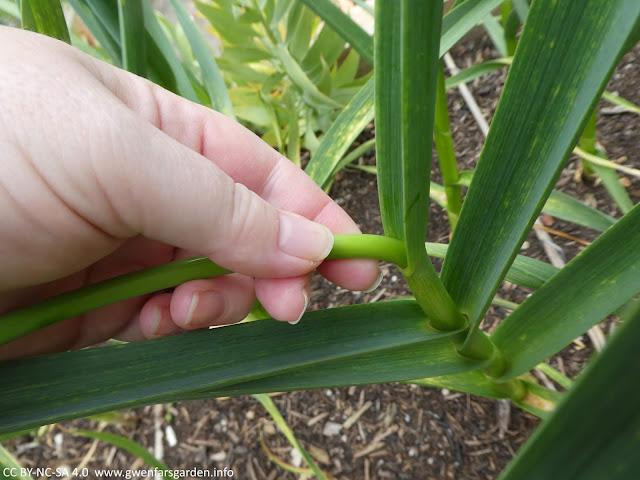
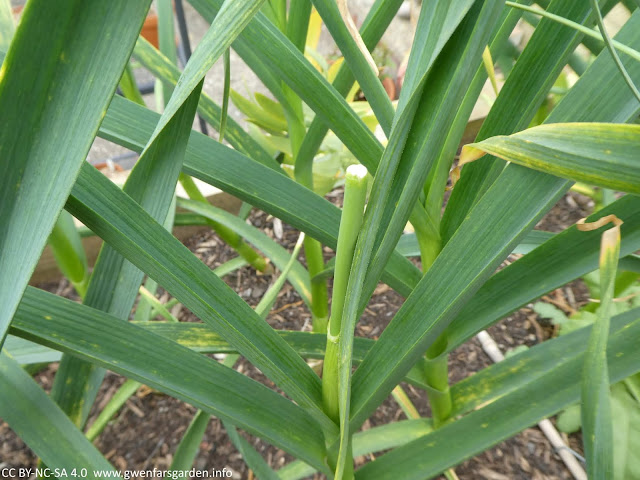
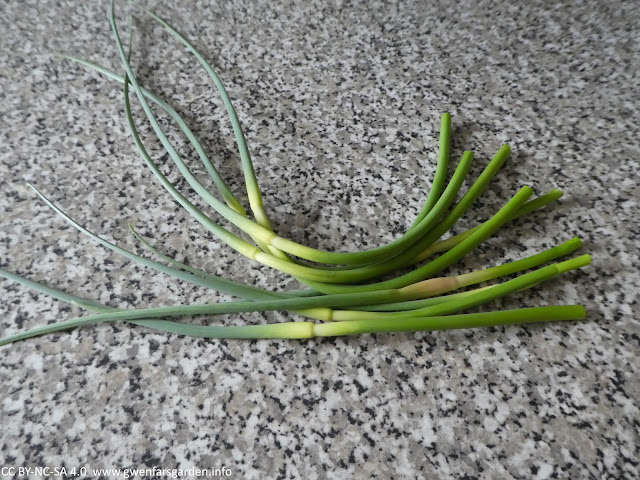
I'm growing both – I noticed scapes on the garlic at the allotment so I really need to get pinching.
We eat garlic scapes here in Malaysia. They're tasty. Not sure if they're imported or grown locally though.